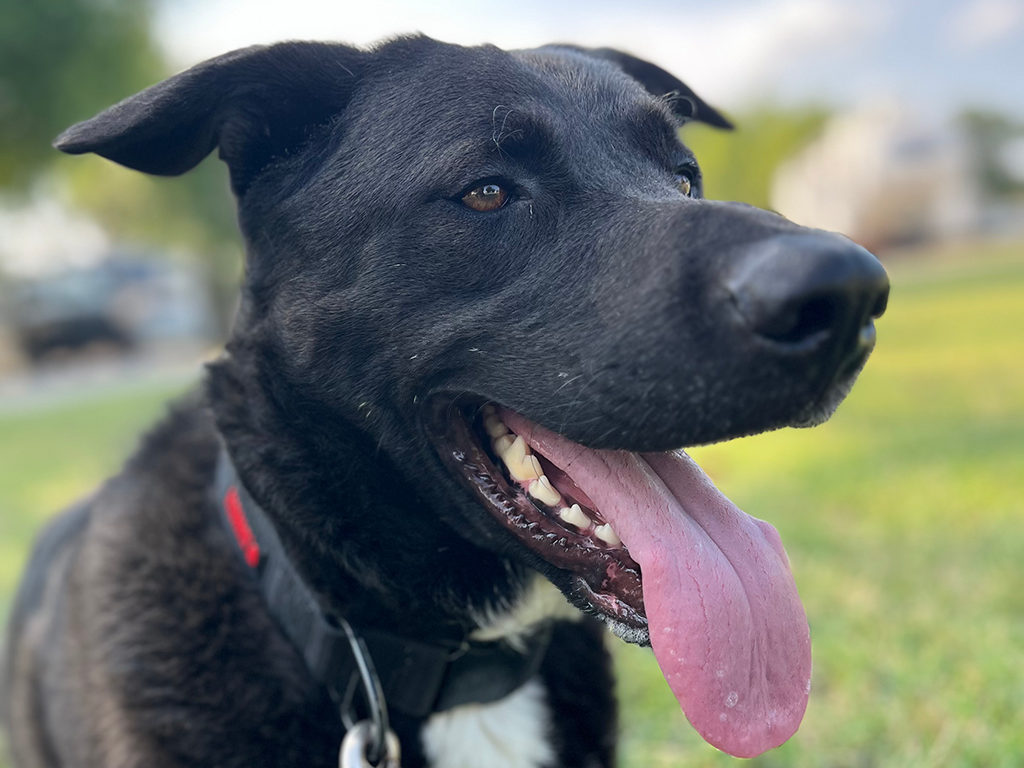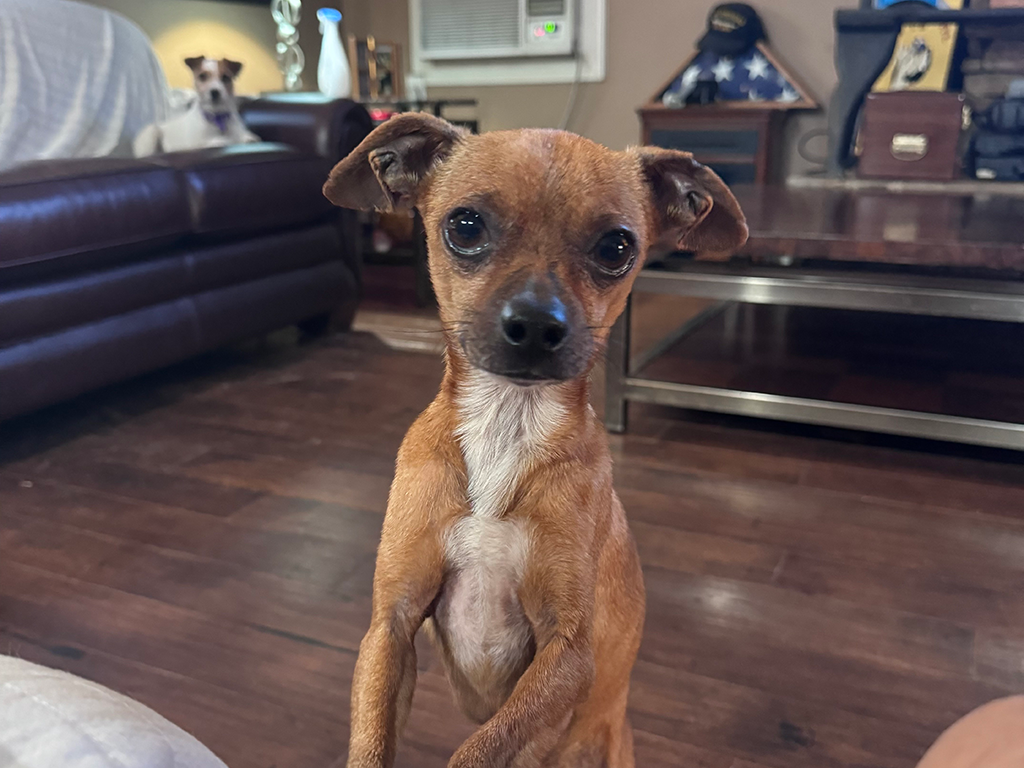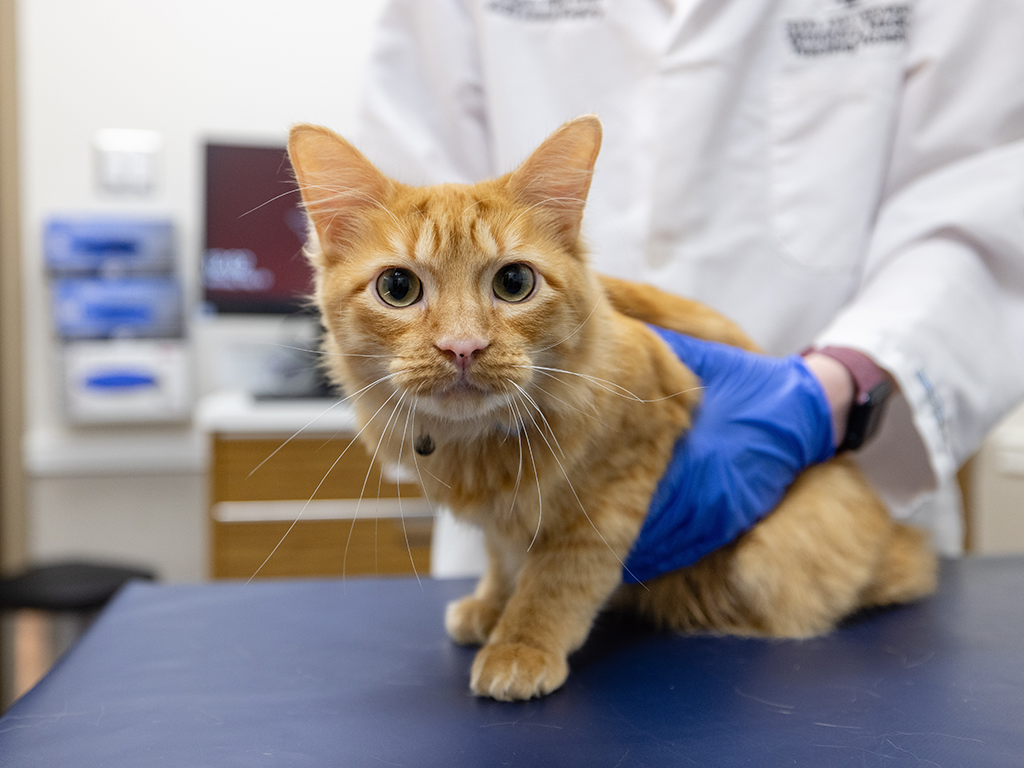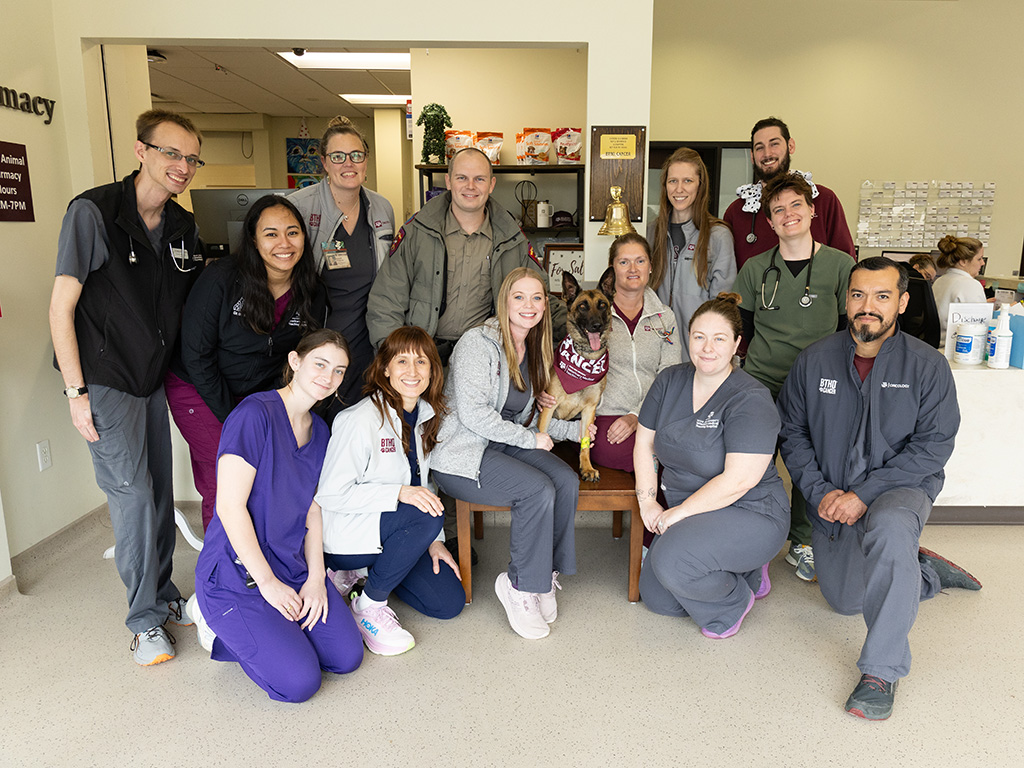A Cinder-Ellie Story: Texas A&M Veterinarians Help Dog Live Fairy-Tale Life
Story by Rachel Knight, VMBS Marketing & Communications
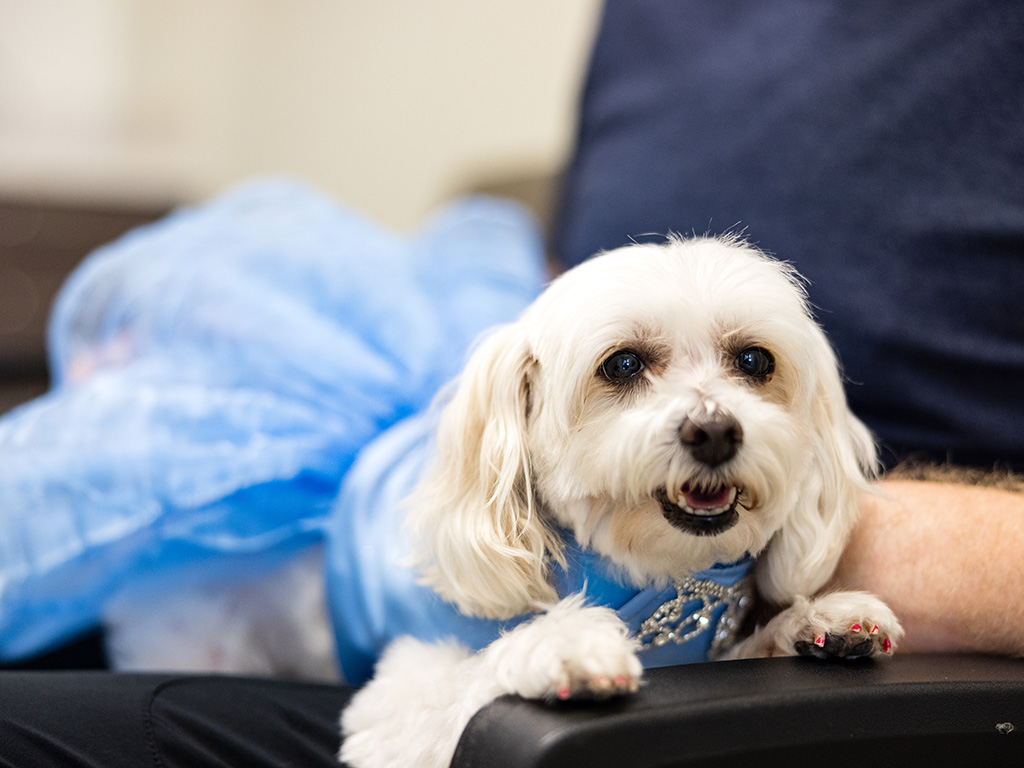
Whenever Ellie, a small, vivacious mixed-breed dog, visits the Texas A&M Small Animal Teaching Hospital (VMTH), her owner Robert Wick makes sure she’s dressed for the occasion. Ellie’s wardrobe includes custom-made gowns with intricate details fit for a princess, including jeweled collars, floral appliques, and tulle skirts.
Like the fictional character Cinderella, Ellie’s life hasn’t always been quite so fabulous.
Unlike the glass slipper that brought Cinderella and her Prince Charming together, it was a tumor on Ellie’s mammary gland that brought Ellie into Wick’s life. Thankfully, with help from her Texas A&M veterinary team and Evelyn Griffin — this story’s fairy godmother — Ellie and Wick are on their way to living happily ever after.
A Shared Love For Animals Saves A Life
Wick’s love for animals began at a young age, but it grew even stronger when he began working for Griffin, a philanthropist in the Houston area and benefactor of several charitable initiatives promoting the health and well-being of animals and people.
“When you’re around somebody like Mrs. Griffin, you really begin to have a different kind of love for animals,” Wick said. “She quickly became like a mom to me, and she is the same kind of figure for animals. She taught me what it means to put animals first.”
Wick was working as Griffin’s assistant when he came across a post on Nextdoor about a small white dog named Ellie in need of veterinary care.
“In the photos they shared of Ellie, you could see an ulcerated tumor on her chest,” Wick said. “The post from the animal rescue group explained that Ellie was put on the street when her previous owners realized they couldn’t afford her medical needs. I took one look at the photos and said, ‘Bring her to my house and I’ll take her to Texas A&M.’ Mrs. Griffin was equally eager to do something to help Ellie and actually paid for Ellie’s treatment.”
When the rescue group delivered Ellie to her new home, Wick and Griffin were ready to make the drive to Texas A&M, where Ellie’s journey back to good health could begin.
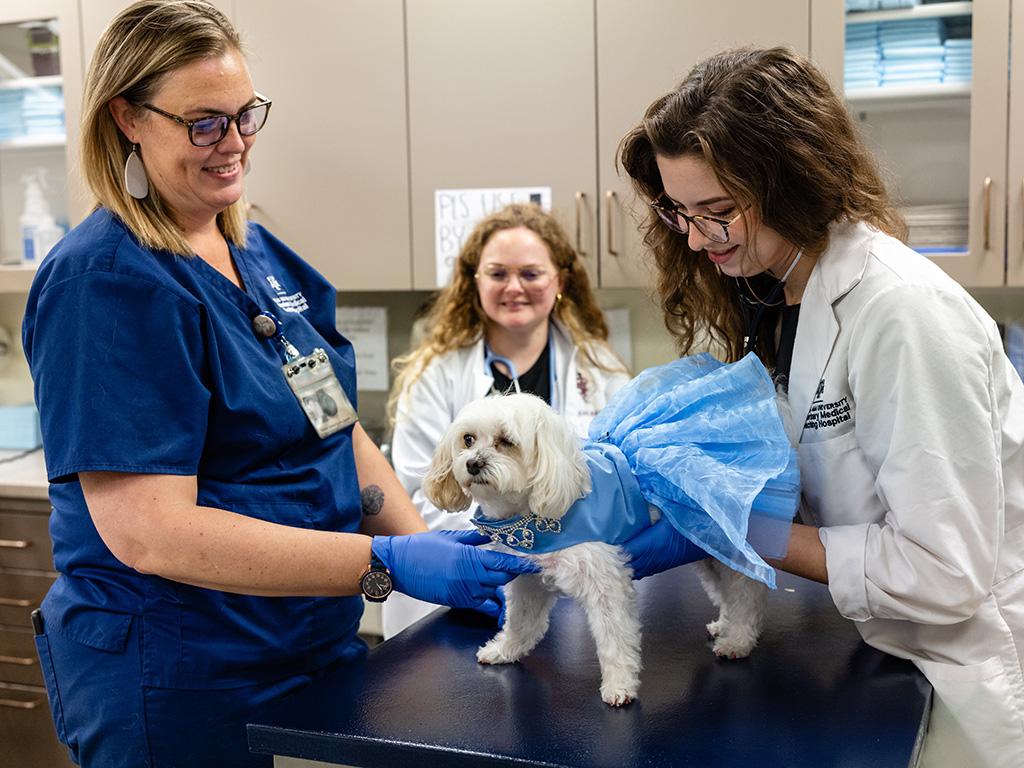
Providing Compassionate Care
Ellie was initially seen by the Emergency & Critical Care Service at the SATH before being referred to the Oncology Service for cancer treatment.
Dr. Emma Warry, a clinical associate professor and oncology specialist, began working on Ellie’s cancer diagnosis and treatment right away.
“After an initial examination of Ellie’s mass, which was about 10 centimeters in diameter, we recommended a CT scan,” Warry said. “The CT scan helped us with something called lymph node mapping. Mammary tumors spread through the lymph nodes, but we don’t always know which lymph nodes they will affect, so the mapping process is important in determining a course of treatment. We were able to determine that two lymph nodes needed to be removed in addition to the tumor on her fourth left mammary gland.”
After Ellie healed from her surgery, Warry recommended a course of chemotherapy that included five treatments given at the SATH every two to three weeks.
Ellie’s chemotherapy was newly underway when she suddenly became very ill while staying with a veterinary technician caretaker in Houston.
“The vet tech called me around midnight and said, ‘Ellie is throwing up, not eating, and not responding. Her temperature is dropping and everything is failing,’” Wick said. “I took Ellie to Gulf Coast Veterinary Specialists, which is a veterinary emergency hospital in Houston. I was so scared. Ellie had already been through so much. She had just found a better life, and now her body was failing.”
Gulf Coast diagnosed Ellie with Addison’s disease, which can be deadly if left untreated, and referred her care to Texas A&M. She then became a patient in the Internal Medicine Service (IM) where Dr. Alyssa Jenkins, an IM resident, took over management of Ellie’s care for Addison’s disease.
“Addison’s disease is basically a deficiency of hormones that are typically secreted by the adrenal glands, which are located near the kidneys” Jenkins said. “One of the hormones Addison’s affects plays a role in many bodily functions — most notably stress. So, part of Ellie’s management is keeping her medication doses in alignment with whatever stressors she might have going on in her life.
“The other hormone that Addison’s affects helps regulate electrolytes and fluid balance. It’s very important that we keep her in an appropriate range on that one as well, because it helps the kidneys regulate the amount of fluid available in the body and it helps compensate for things like dehydration.”
Jenkins and the IM team now manage Ellie’s Addison’s disease with monthly injections at the SATH and with a daily medication taken at home.
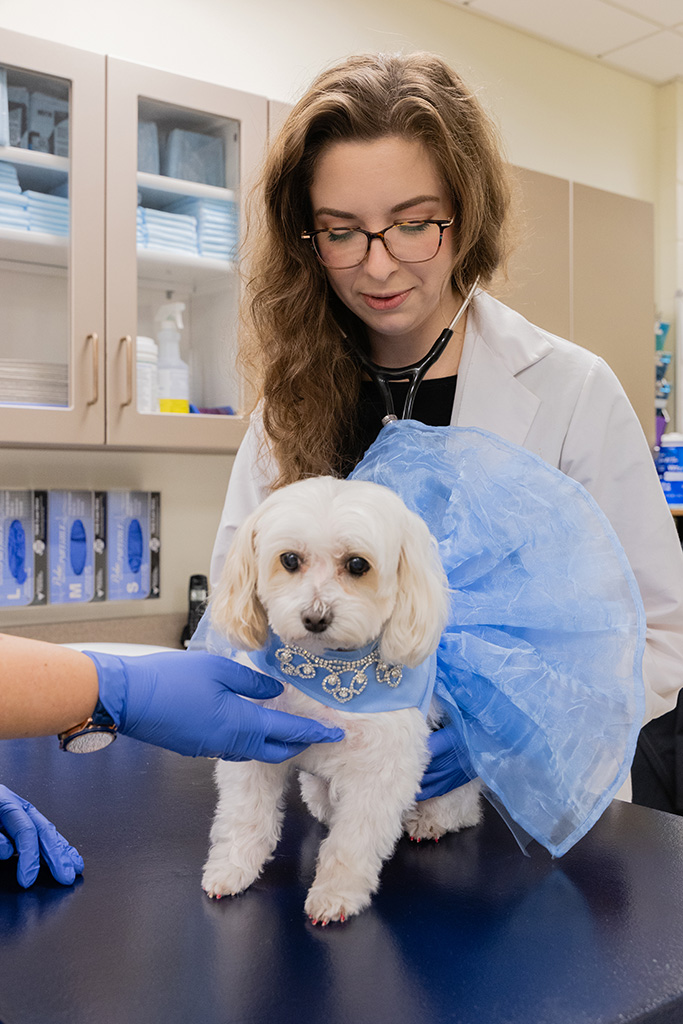
“Thankfully, Addison’s is very treatable,” Jenkins said. “Patients like Ellie are typically able to live pretty normal lives with appropriate diagnosis and treatment. Ellie is very fortunate to have found an owner so willing to meet her needs and who diligently takes notice of anything abnormal with her health.”
Living Her Best Life
Now cancer free and with her Addison’s disease being carefully managed, Ellie is in good health and receiving a little extra pampering from Wick.
“Ellie suffered a lot early on in her life,” Wick said. “When I compare her condition from when she joined our family to now, it’s just incredible how far she’s come. Everyone notices her dresses and all of the little things we do to make her more comfortable, but she’s more than deserving of it. She went through so much early on and is still just the sweetest dog, it’s only fitting that she gets a little extra pampering.”
In the time Ellie’s Texas A&M veterinary team has spent with her, the team has also formed a special bond with the little pup.
“Ellie went from being a street dog to being an extraordinarily valued member of a family, and that’s incredibly rewarding to watch and be a part of,” Warry said. “She’s such a sweet, happy dog. I think she knew she landed on her feet and just took everything in stride and was such a happy, joyful patient.”
Wick said this Cinder-Ellie story wouldn’t have been possible without Texas A&M.
“We are so thankful to the Texas A&M veterinarians who have helped Ellie heal,” Wick said. “Everyone at Texas A&M genuinely loves and cares for Ellie, which is really important to us. You also get access to the best, most cutting-edge care available here. I’d absolutely recommend Texas A&M’s veterinary hospital to other pet owners and animal lovers.”
###
For more information about the Texas A&M College of Veterinary Medicine & Biomedical Sciences, please visit our website at vetmed.tamu.edu or join us on Facebook, Instagram, and Twitter.
Contact Information: Jennifer Gauntt, Director of VMBS Communications, Texas A&M College of Veterinary Medicine & Biomedical Sciences, jgauntt@cvm.tamu.edu, 979-862-4216
You May Also Like


